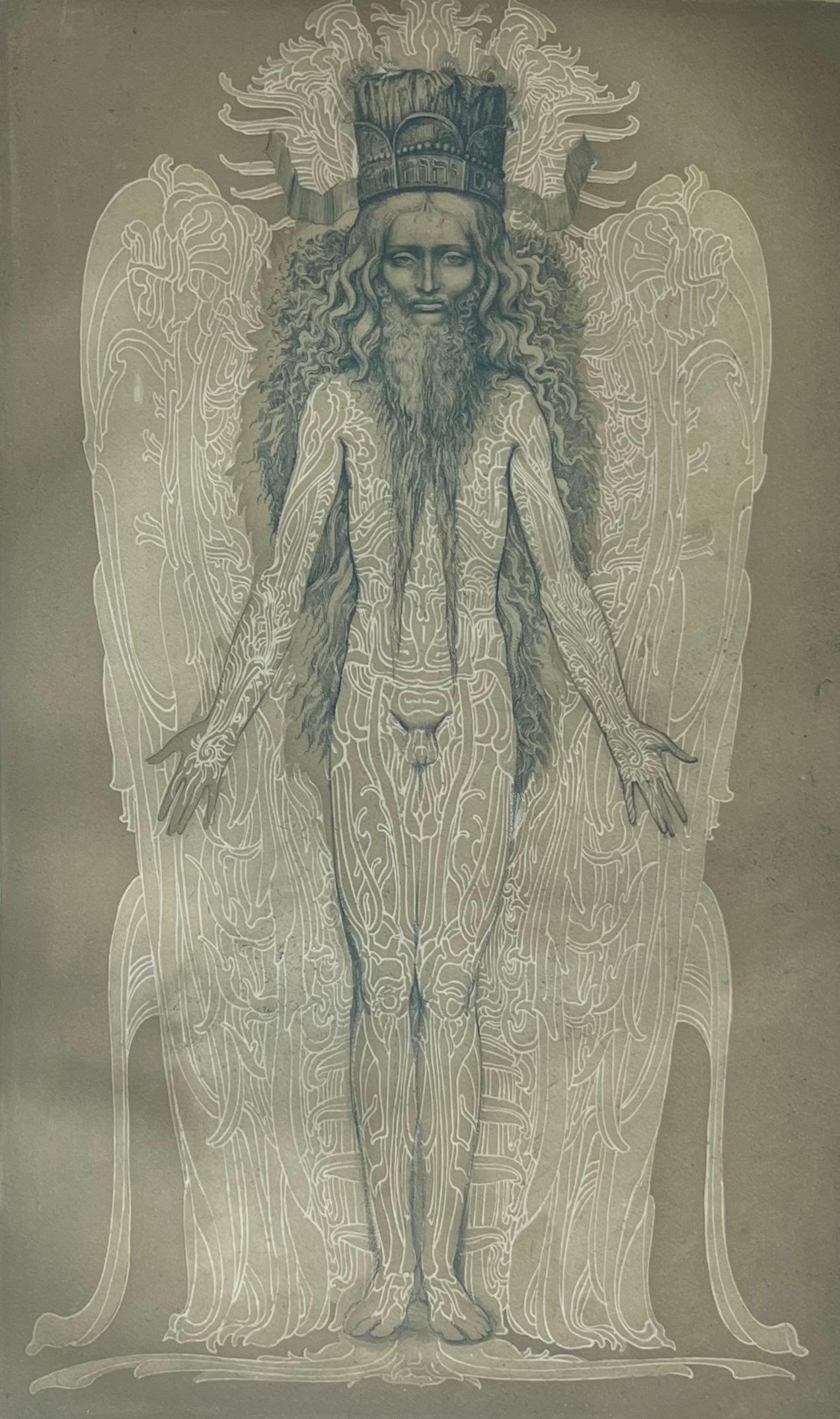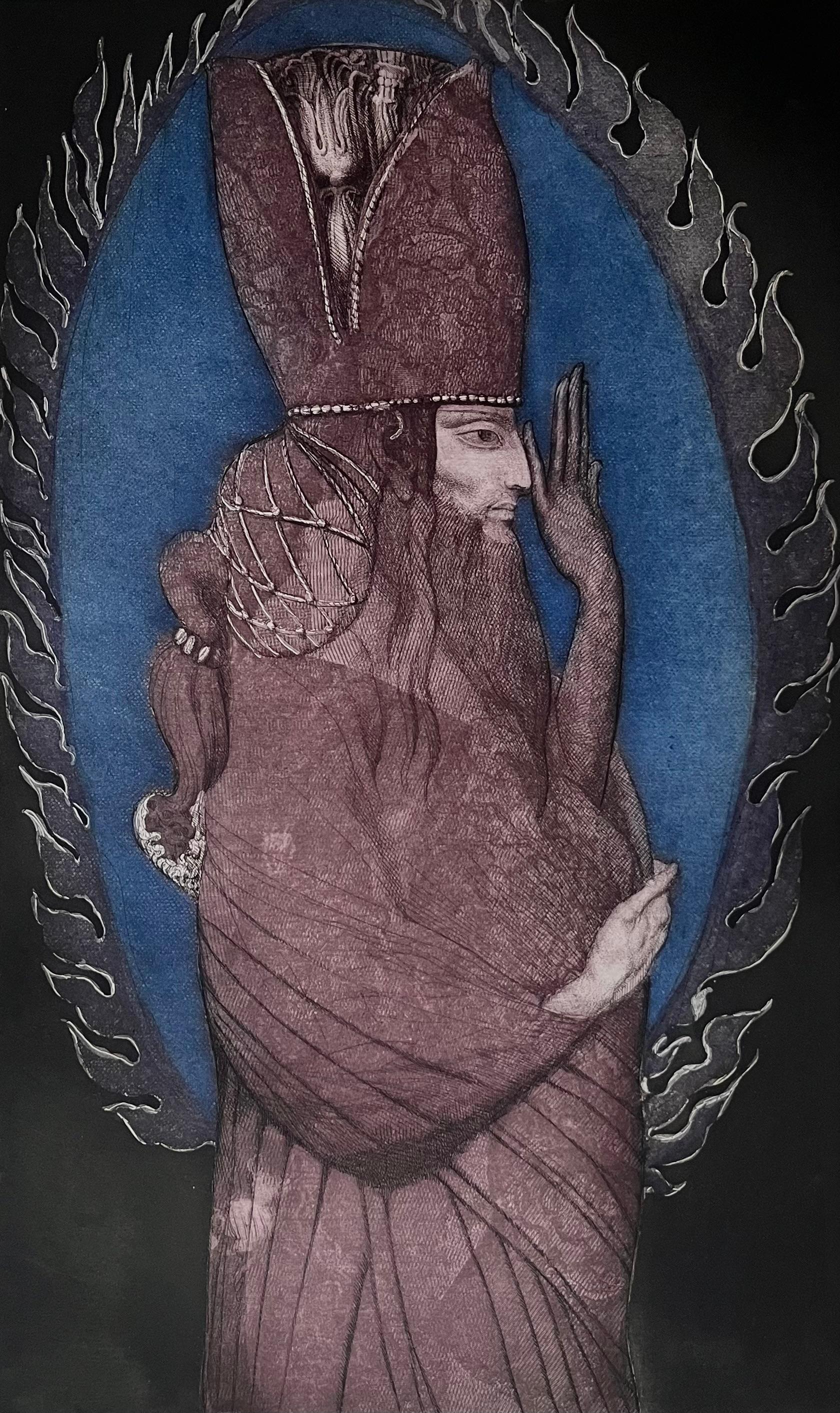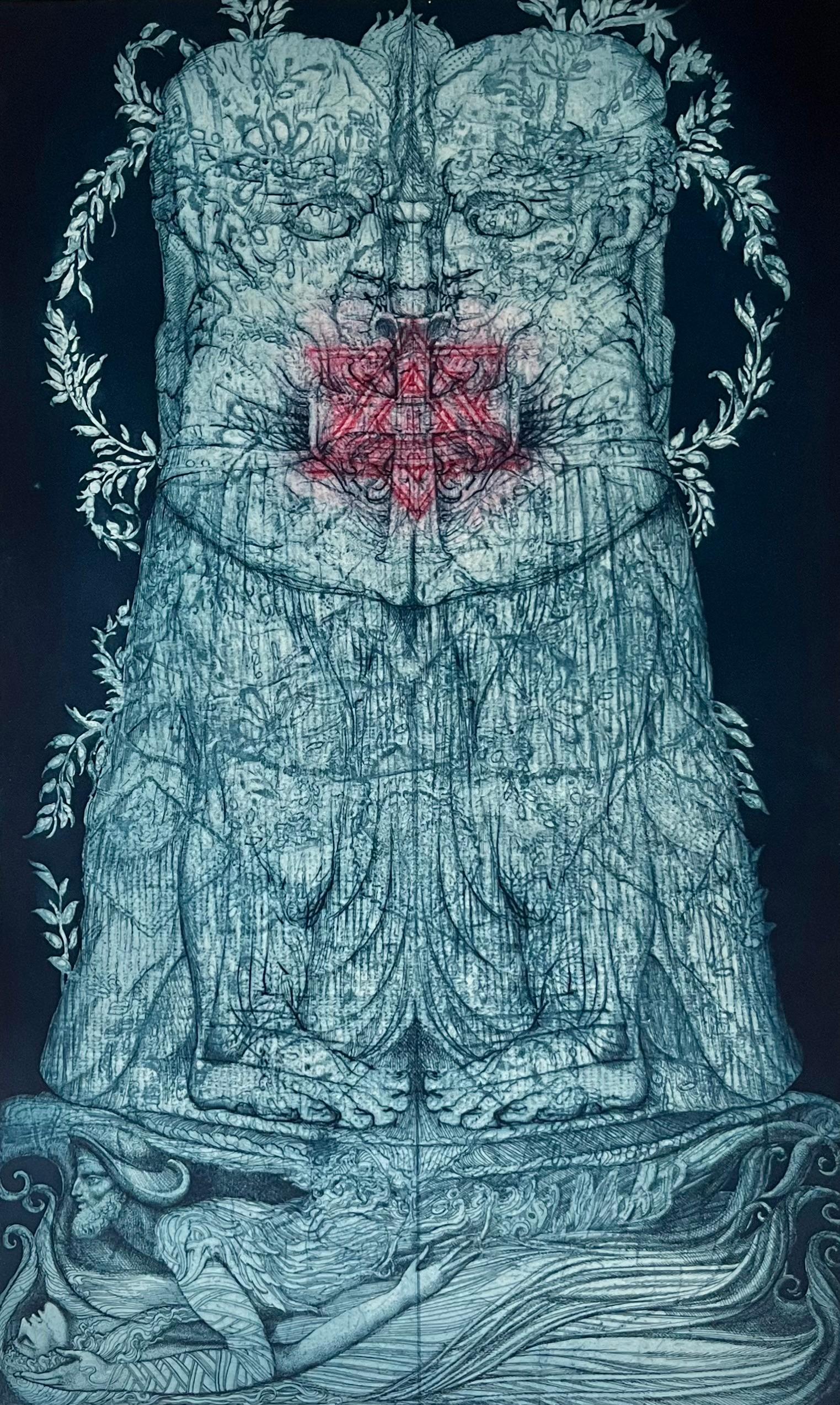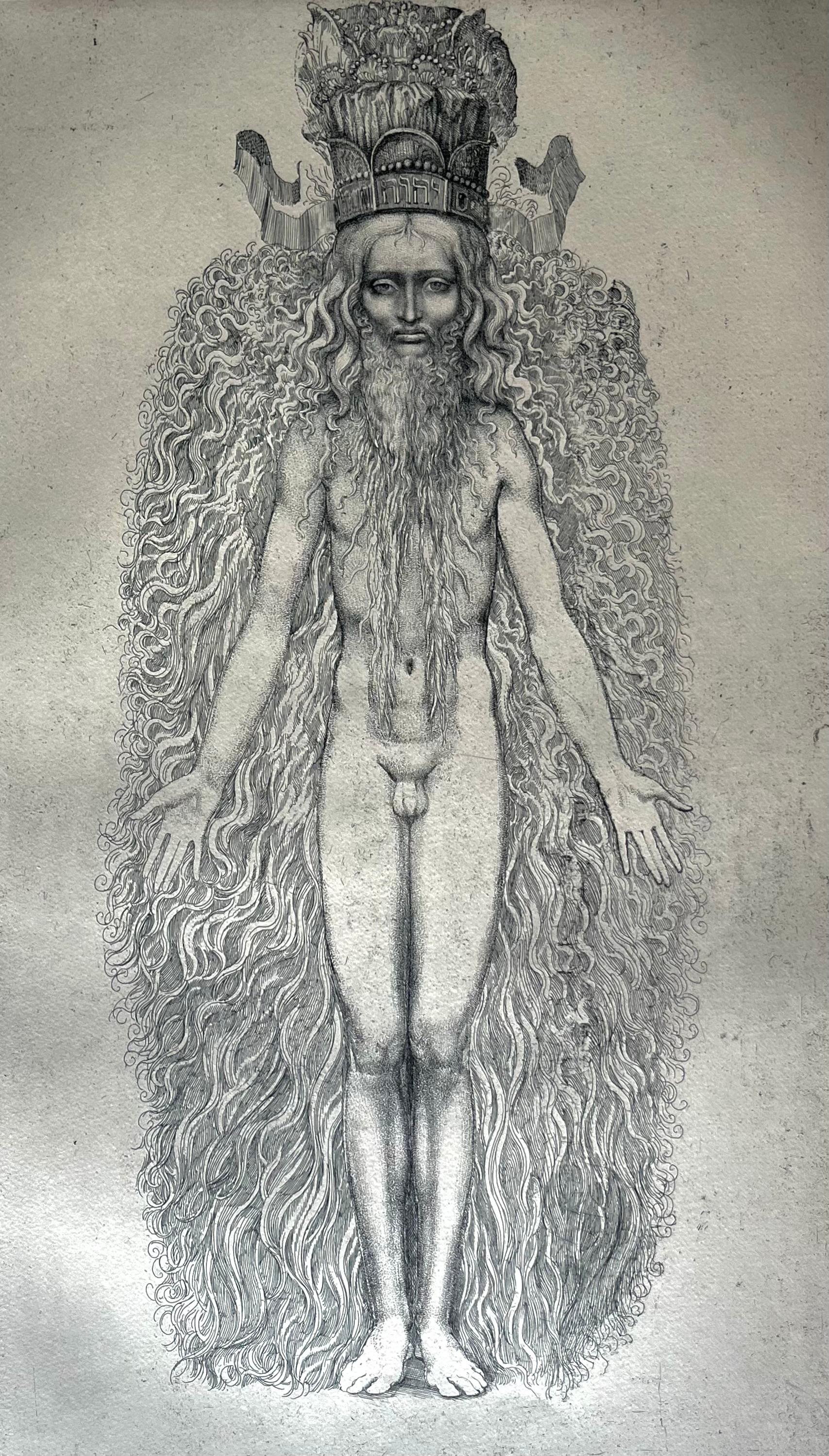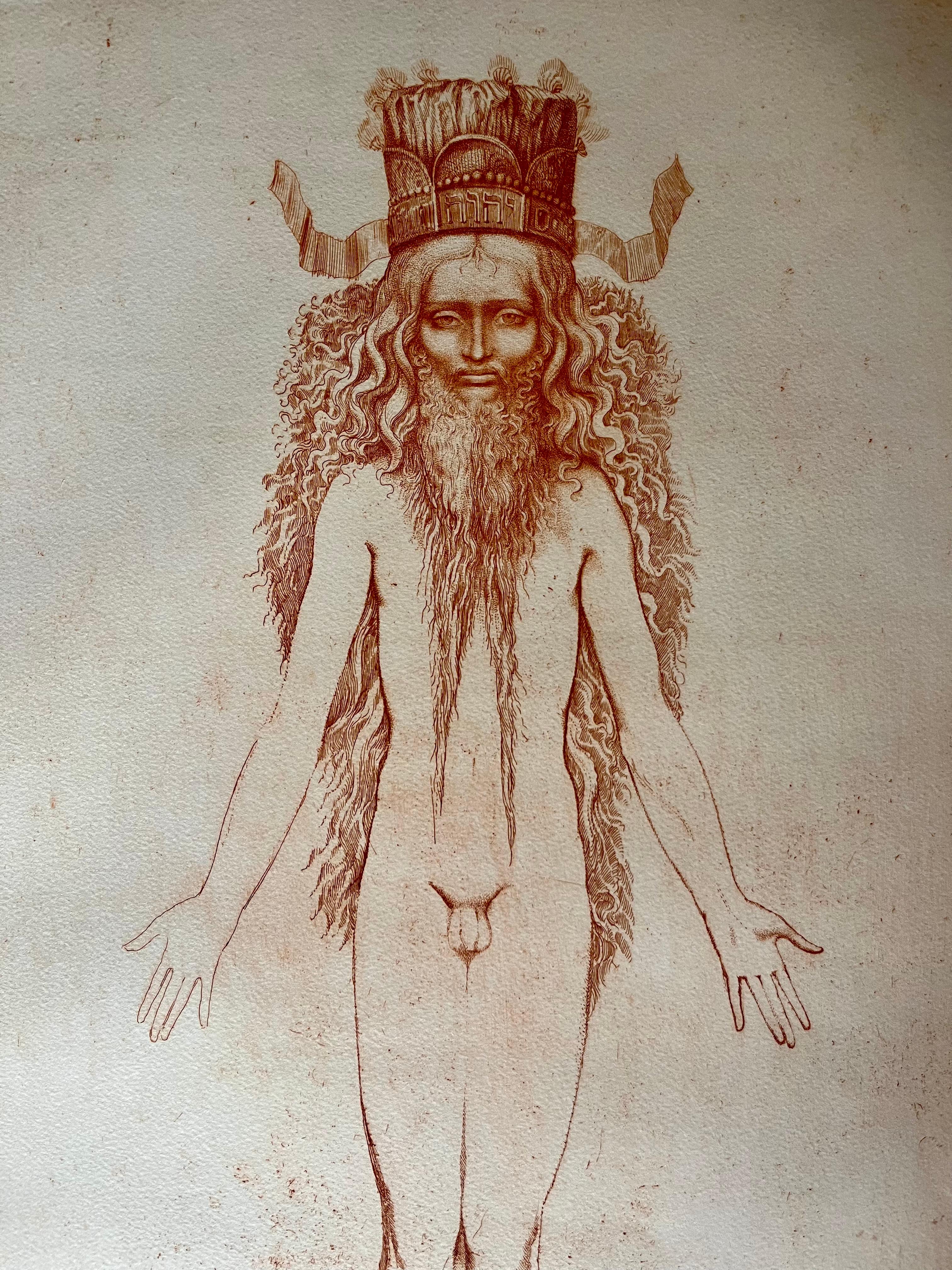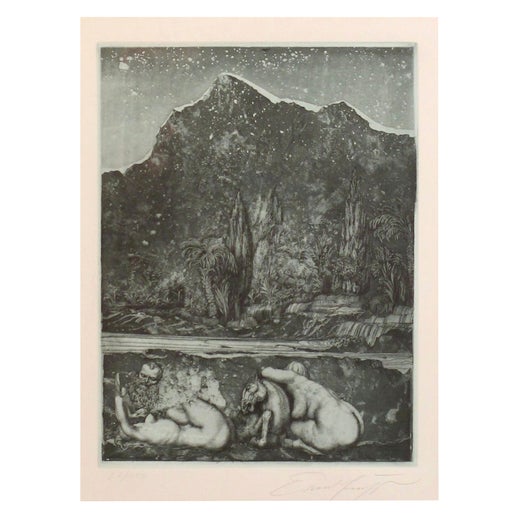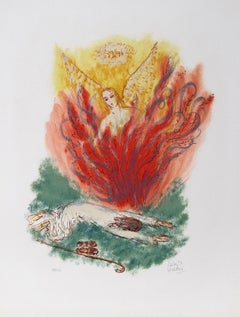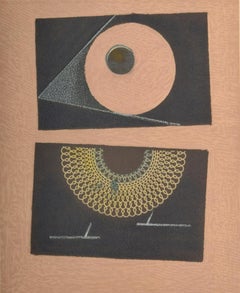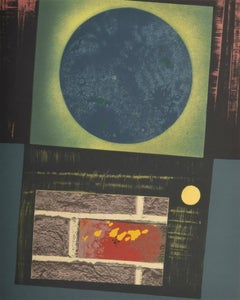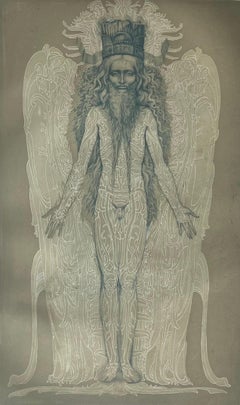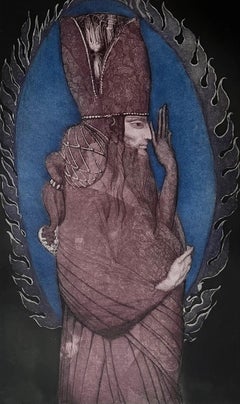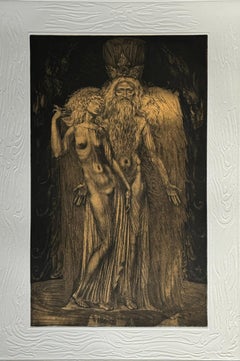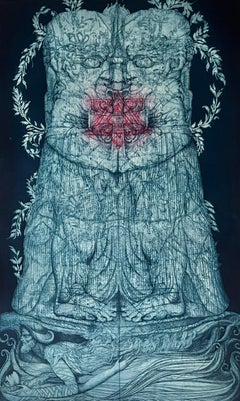Items Similar to Kabbalah (32 PATHS OF WISDOM with 36 illustrations by Ernst Fuchs)
Want more images or videos?
Request additional images or videos from the seller
1 of 7
Ernst FuchsKabbalah (32 PATHS OF WISDOM with 36 illustrations by Ernst Fuchs)1975
1975
$8,500
�£6,483.52
€7,398.97
CA$11,953.22
A$13,118.95
CHF 6,894.20
MX$156,112.87
NOK 88,128.38
SEK 80,531.90
DKK 55,277.65
About the Item
Kabbalah Gravures (THIRTY-TWO PATHS OF WISDOM by SEFER YETZIRA with 36 illustrations by ERNST FUCHS), 1975
14 original engravings (etched engraving, etching-needle, soft varnish, burin), inset plates numbered and signed by the artist, 7 of them in a separate portfolio, 22 full-page colour illustrations in-text. Signed and numbered. From an Edition of 297.
- Creator:Ernst Fuchs (1930, Austrian)
- Creation Year:1975
- Dimensions:Height: 30 in (76.2 cm)Width: 22 in (55.88 cm)
- Medium:
- Movement & Style:
- Period:
- Condition:in original portfolio.
- Gallery Location:New York, NY
- Reference Number:1stDibs: LU128527983282
Ernst Fuchs
Ernst Fuchs was a very poliedric artist. He was a painter, draftsman, printmaker, sculptor, architect, stage designer, composer, poet, singer and one of the founders of the Vienna School of Fantastic Realism. In 1972, he acquired the derelict Otto Wagner Villa in Hütteldorf, which he restored and transformed. The villa was inaugurated as the Ernst Fuchs Museum in 1988.
About the Seller
No Reviews Yet
Vetted Professional Seller
Every seller passes strict standards for authenticity and reliability
Established in 2003
1stDibs seller since 2019
23 sales on 1stDibs
Typical response time: 1 hour
Associations
Association of Women Art Dealers
- ShippingRetrieving quote...Shipping from: New York, NY
- Return Policy
More From This Seller
View AllEva in negligee
By Ernst Fuchs
Located in New York, NY
Image: 12.4 x 12 in.
Frame: 25 x 22.5 in.
Edition of 200
Signed and numbered in pencil
Category
20th Century Nude Prints
Materials
Aquatint, Etching
$2,800 Sale Price
20% Off
VI from Visions of the Bible
By Reuven Rubin
Located in New York, NY
Signed and numbered in pencil.
Category
1970s Prints and Multiples
Materials
Lithograph
$2,400 Sale Price
20% Off
I Like Girls
By Max Ernst
Located in New York, NY
From the "Dente Prompte" portfolio
Gallery labels to reverse: Gluria Luria Gallery, Bay Harbor Islands, Florida
Category
20th Century Surrealist Prints and Multiples
Materials
Lithograph
Price Upon Request
Fureur, tu me Traites Comme la Tristesse
By Max Ernst
Located in New York, NY
From the "Dente Prompte" portfolio
Gallery labels to reverse: Gluria Luria Gallery, Bay Harbor Islands, Florida
Category
20th Century Surrealist Prints and Multiples
Materials
Lithograph
Price Upon Request
Hippies (Complete Portfolio)
By Salvador Dalí
Located in New York, NY
Edition XVII of C
Each work is accompanied by a Certificate of Authenticity from Pierre Argillet.
Category
Late 20th Century Surrealist Prints and Multiples
Materials
Paper, Etching
Price Upon Request
Fureur, tu me Traites Comme la Tristesse
By Max Ernst
Located in New York, NY
Signed and numbered in pencil
Lithograph
20.5 x 17 inches
Edition 64 of 70
Category
1960s Abstract Prints
Materials
Lithograph
$3,200 Sale Price
20% Off
You May Also Like
Engraving #3 by Ernst Fuchs: KABBALAH (SEFER YETSIRA and 32 PATHS OF WISDOM)
By Ernst Fuchs
Located in Cliffside Park, NJ
Original engraving #3 by Ernst FUCHS from Kabbalah (THIRTY-TWO PATHS OF WISDOM by SEFER YETZIRA), 1978
Etching signed and numbered 16/30 E.A.
Page size - 30 x 22 in 76 x 56 cm
Image...
Category
1970s Modern Figurative Prints
Materials
Paper, Etching
Engraving #4 by Ernst Fuchs: KABBALAH (SEFER YETSIRA and 32 PATHS OF WISDOM)
By Ernst Fuchs
Located in Cliffside Park, NJ
Original engraving #4 by Ernst FUCHS from Kabbalah (THIRTY-TWO PATHS OF WISDOM by SEFER YETZIRA), 1978
Etching signed and numbered 16/30 E.A.
Page size - 30 x 22 in 76 x 56 cm
Image...
Category
1970s Modern Figurative Prints
Materials
Paper, Etching
Engraving #1 by Ernst Fuchs: KABBALAH (SEFER YETSIRA and 32 PATHS OF WISDOM)
By Ernst Fuchs
Located in Cliffside Park, NJ
Original engraving #7 by Ernst FUCHS from Kabbalah (THIRTY-TWO PATHS OF WISDOM by SEFER YETZIRA), 1978
Etching signed and numbered 16/30 E.A.
Page size - 30 ...
Category
1970s Modern Figurative Prints
Materials
Paper, Etching
Engraving #12 by Ernst Fuchs: KABBALAH (SEFER YETSIRA and 32 PATHS OF WISDOM)
By Ernst Fuchs
Located in Cliffside Park, NJ
Original engraving #12 by Ernst FUCHS from Kabbalah (THIRTY-TWO PATHS OF WISDOM by SEFER YETZIRA), 1978
Etching signed and numbered 16/30 E.A.
Page size - 30 x 22 in 76 x 56 cm
Imag...
Category
1970s Modern Figurative Prints
Materials
Paper, Etching
Engraving #5 by Ernst Fuchs: KABBALAH (SEFER YETSIRA and 32 PATHS OF WISDOM)
By Ernst Fuchs
Located in Cliffside Park, NJ
Original engraving #5 by Ernst FUCHS from Kabbalah (THIRTY-TWO PATHS OF WISDOM by SEFER YETZIRA), 1978
Etching signed and numbered 16/30 E.A.
Page size - 30 x 22 in 76 x 56 cm
Image...
Category
1970s Modern Figurative Prints
Materials
Paper, Etching
Engraving #7 by Ernst Fuchs: KABBALAH (SEFER YETSIRA and 32 PATHS OF WISDOM)
By Ernst Fuchs
Located in Cliffside Park, NJ
Original engraving #7 by Ernst FUCHS from Kabbalah (THIRTY-TWO PATHS OF WISDOM by SEFER YETZIRA), 1978
Etching signed and numbered 16/30 E.A.
Page size - 30 ...
Category
1970s Modern Figurative Prints
Materials
Paper, Etching
More Ways To Browse
Van Dyck Prints
Vintage Gladiolus
Vintage Silkscreen Posters
Vuillard Pastels
Yayoi Kusama Pumpkin Print
Adele Bloch Bauer
Adrian Piper
Andy Warhol Ladies
Andy Warhol Limited Editions
Andy Warhol Signed Lithograph
Bar Mitzvah
Bob Cato
Campari Print
Cindy Sherman Poster
Cj Hendry
Currier Ives View Of New York
David Hockney Flowers
Drug Pop Art
